Shootout: ASUS ZenFone 5 vs. HTC Desire 616 vs. Xiaomi Redmi 1S
Dual-SIM smartphones are gaining in popularity because they usually come with decent specs and they aren't terribly expensive too. In this shootout, we round up three such devices - ASUS ZenFone 5, HTC Desire 616, and Xiaomi Redmi 1S - to see which one offers the best bang for the buck.
Popularity of Dual-SIM Phones
Dual-SIM phones have been in the market for a long time; however, they only became more popular recently due to the entry of Chinese phone maker Xiaomi in this region. Motorola did make a splash on the scene in early January when it launched the Moto G, but the one phone that got everyone's attention was Xiaomi's original Redmi, which started selling since February 21 this year. Since then, the floodgates seem to have swung wide open; ASUS, HTC, Huawei, Oppo, and Nokia have all jumped on the bandwagon.
Bearing that in mind, we decided to take a look at notable recently launched dual-SIM smartphones in the market. For this comparison, we narrowed down dual-SIM smartphones with three criteria: display sizes up to 5-inches, priced below S$300, and made available in retail as recent as July 2014.
This brings us to three models - the ASUS ZenFone 5, the HTC Desire 616 Dual SIM and the Xiaomi Redmi 1S. The premise of this shootout article is to help consumers decide which of these three new dual-SIM smartphone offers the best price to performance ratio. Note that while we've reviewed the ASUS ZenFone 5 sometime back in May, that was a review unit that had 1GB of RAM. The recently available retail version that was sold to consumers was bumped up to 2GB and so this is the edition we're comparing this time round.
Before we move on to the feature presentation in proper, check out how the phones stack up against one another:
ASUS ZenFone 5

The retail unit of the ASUS ZenFone 5 comes with 2GB RAM.
Aside from the additional 1GB of RAM in the retail version, the rest of the ASUS ZenFone 5's specs remain similar as the review unit we tested in May. Instead of going into great length about the ZenFone 5, we shall summarize the key points here and compare it against the other two phones.
In terms of design and handling, the ZenFone 5 wins hands down with its curved, soft-touch rear. The matte texture is a step up from the glossy plastic we saw on the HTC Desire 616, as it does not turn into an ugly mess of fingerprints and smudges after a few minutes of handling. However, smudges can still be obvious on the black model compared to its red counterpart. Overall, the ZenFone 5 feels more sturdy than its rivals. On a side note, we've gotten feedback from some users who think that the rear backing may be too smooth for its own good. While we beg to differ from handling numerous other devices, do give it a try personally to see if it suits your handling needs.

The rear of the ASUS ZenFone 5 has a soft touch texture that feels good. It also resists fingerprints and smudges.
When it comes to navigation buttons, do note that there is no backlight for those on the ZenFone 5. The same applies for the Redmi 1S. This may pose a slight inconvenience when using the phone in dark environments as you can't tell if you've hit the correct button. HTC circumvents this problem as the Desire 616 utilizes onscreen keys.
Focusing on the back, it doesn't take much effort to remove the cover. Of the three dual-SIM phones, the ZenFone 5 is the only device with a non-removable battery. It is also the only device that supports 3G on two micro-SIM card slots. Located on the top right corner is the microSD memory card slot, which supports memory cards up to 64GB in capacity. Out of the box, the ZenFone 5 has 4.28GB of available storage space out of its 8GB of internal storage after updating all the preloaded apps.

As the battery is non-removable and the micro-SIM card slots are located away from the SIM card slots, it is more convenient to remove the SIM cards on the ASUS ZenFone 5 than the other two phones.
The ZenFone 5 sports a 5-inch 720p IPS+ display, which is on a par with the Desire 616. The display delivers great clarity, lively colors, and excellent viewing angles. It also boasts of a Glove mode to increase touch sensitivity when you are wearing gloves.
Running on the ZenFone 5 is its newest ZenUI with Android 4.3 Jelly Bean. It is the only device to have a guaranteed update to Android 4.4 KitKat, something we've not heard from the other two companies for their respective phones. Notable features of ZenUI include What's Next (it manages your daily schedule and issues reminders) and Do It Later (ASUS's own to-do list app). You can read more about ZenUI in this dedicated article. Overall, ZenUI comes across as a nice middle ground between HTC's Sense UI on the Desire 616 and Xiaomi's MIUI V5 on the Redmi 1S; it feels more refreshing compared to Sense while at the same time doesn't feel as overwhelming as MIUI V5.
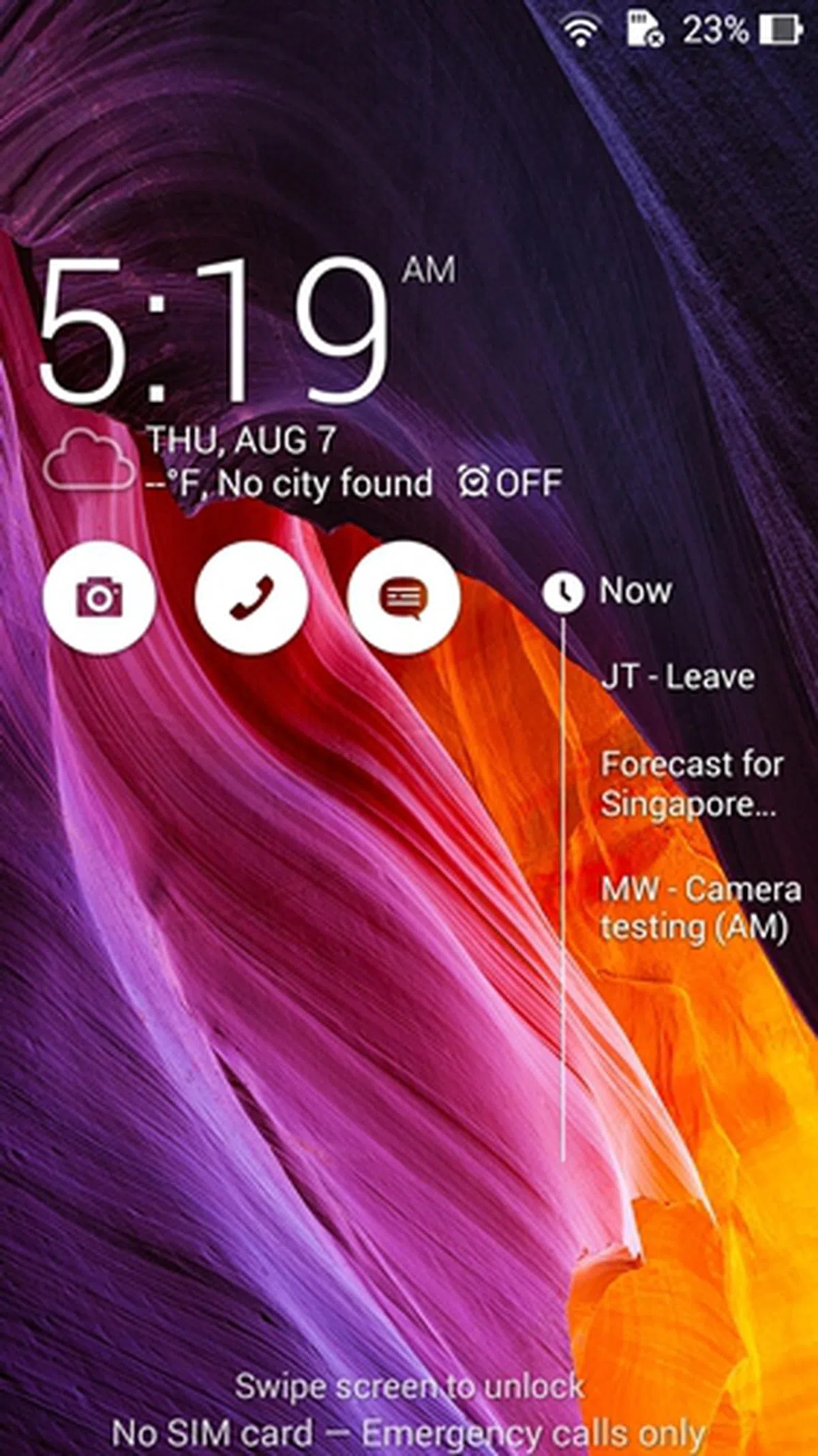 | 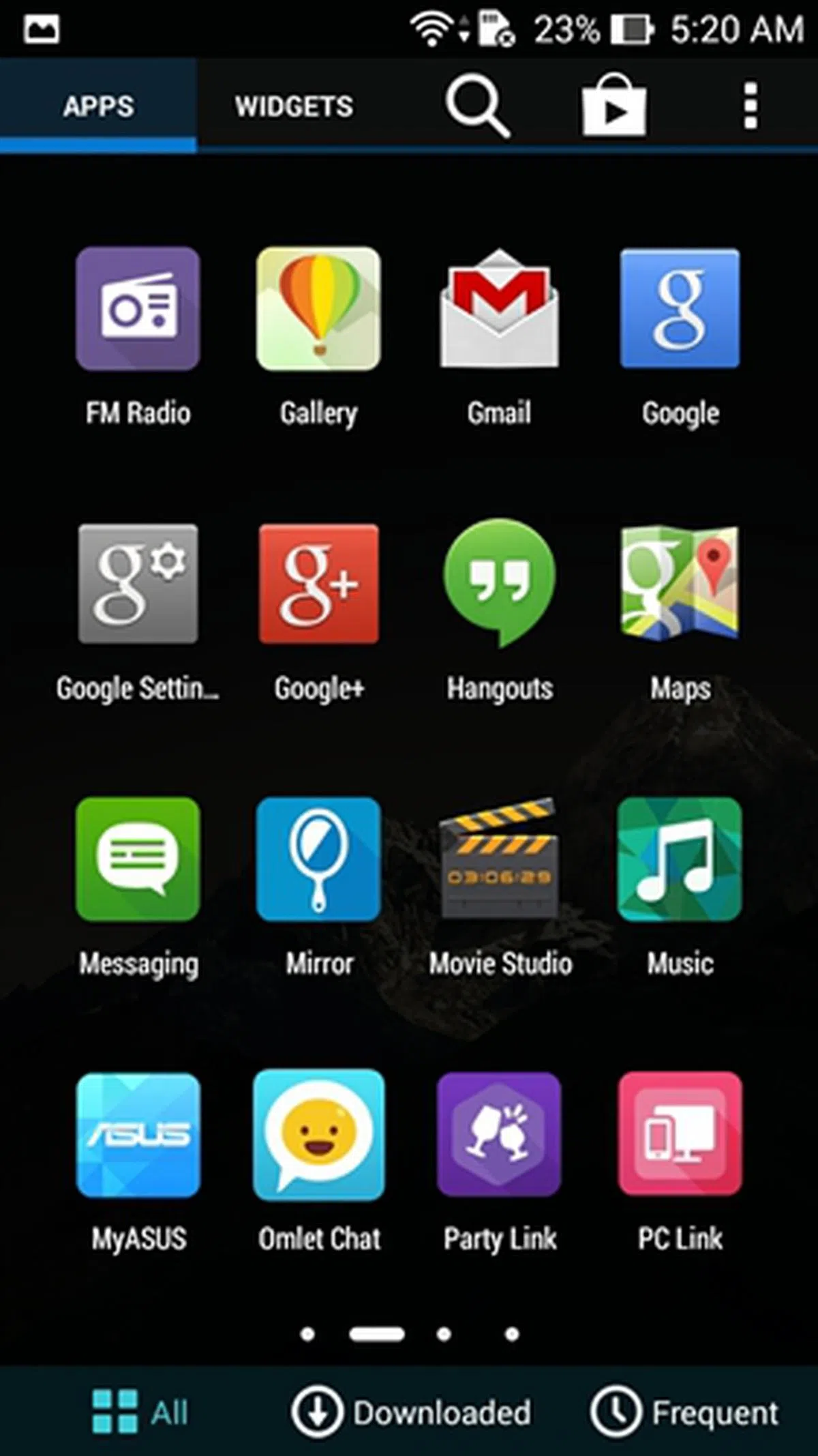 |
Under the hood, the ZenFone 5 is powered by an Intel Atom Z2560 dual-core 1.6GHz processor with 2GB RAM. Compared to the review unit with 1GB RAM, the user navigation is slightly more responsive and smoother, but micro-lags are still present.
HTC Desire 616

The HTC Desire 616 looks almost like every other HTC phone released this year.
In line with the company's strategy to keep its portfolio "a lot cleaner" and have "a lot of synergy on the design and user interface", the Desire 616 looks like its sibling, the Desire 610. While this gives the HTC phones a consistent look and feel, it also means that similar flaws are more likely to be inherited across the entire range.
Off the bat, we really dislike the glossy texture on its rear as it collects fingerprints and smudges very easily. It is especially apparent on the dark gray model, though we expect it to be less of a problem on the pearl white model as white should mask some of these mess (visually, that is) to a certain extent. Having said that, consumers who share our dislike for fingerprints and smudges but still want to get this phone should really buy a case.

A picture speaks a thousand words about the mess of fingerprints and smudges you would get on the rear of the HTC Desire 616.
Fortunately, the glossy plastic does not extend to the sides of the Desire 616. The matte texture on the sides and front face provide a better grip of the device. While the Desire 616 is also sports a 5-inch screen like the ASUS ZenFone 5, it is however just a tad heavier than the latter at 150g (the the ZenFone 5 weighs in at 145g).
Like the other two phones, its rear cover can be removed. To facilitate that, you'll find a dedicated slit at the bottom for you to pry open the cover. Underneath, you will find a microSD memory card slot and two SIM card slots. While both card slots on the ZenFone 5 and Redmi 1S accept micro-SIM and regular-sized SIM cards respectively, the Desire 616 supports the regular SIM on slot 1 while the other slot supports micro-SIM. It is also important to note that SIM card slot 1 supports 3G while slot 2 supports 2G. Take note that you will have to remove the battery in order to access the card slots and make the necessary changes.

From left to right: microSD memory card slot, micro-SIM card slot and regular-sized SIM card slot. Only SIM slot 1 supports 3G data connectivity; slot 2 only supports 2G data connection.
You will have to rely upon the microSD memory card slot for any reasonable storage needs as the Desire 616 only comes with 4GB of internal storage. Having said that, the available storage space after updating the preloaded apps is 1.98GB. Of this available storage space, actual usage space is only 1.31GB, which is roughly on-par with the first generation Xiaomi Redmi (both in terms of available internal storage space and total internal storage space).

The Desire 616 runs on Android 4.2.2 Jelly Bean with HTC Sense. We were told by HTC Singapore that there is no particular version number attached to the Sense interface running on this phone as it is another variant developed specifically for this group of devices.
Therefore, do expect to see a number of recent features missing on the Desire 616, such as Extreme Power Saving mode and Zoe. BlinkFeed, however, is available.Overall, the Sense interface looks a little dated when compared with ZenUI on the ZenFone 5. In terms of customization, it's not as adept as Xiaomi's MIUI V5, but it is decent enough to get the job done.
 | 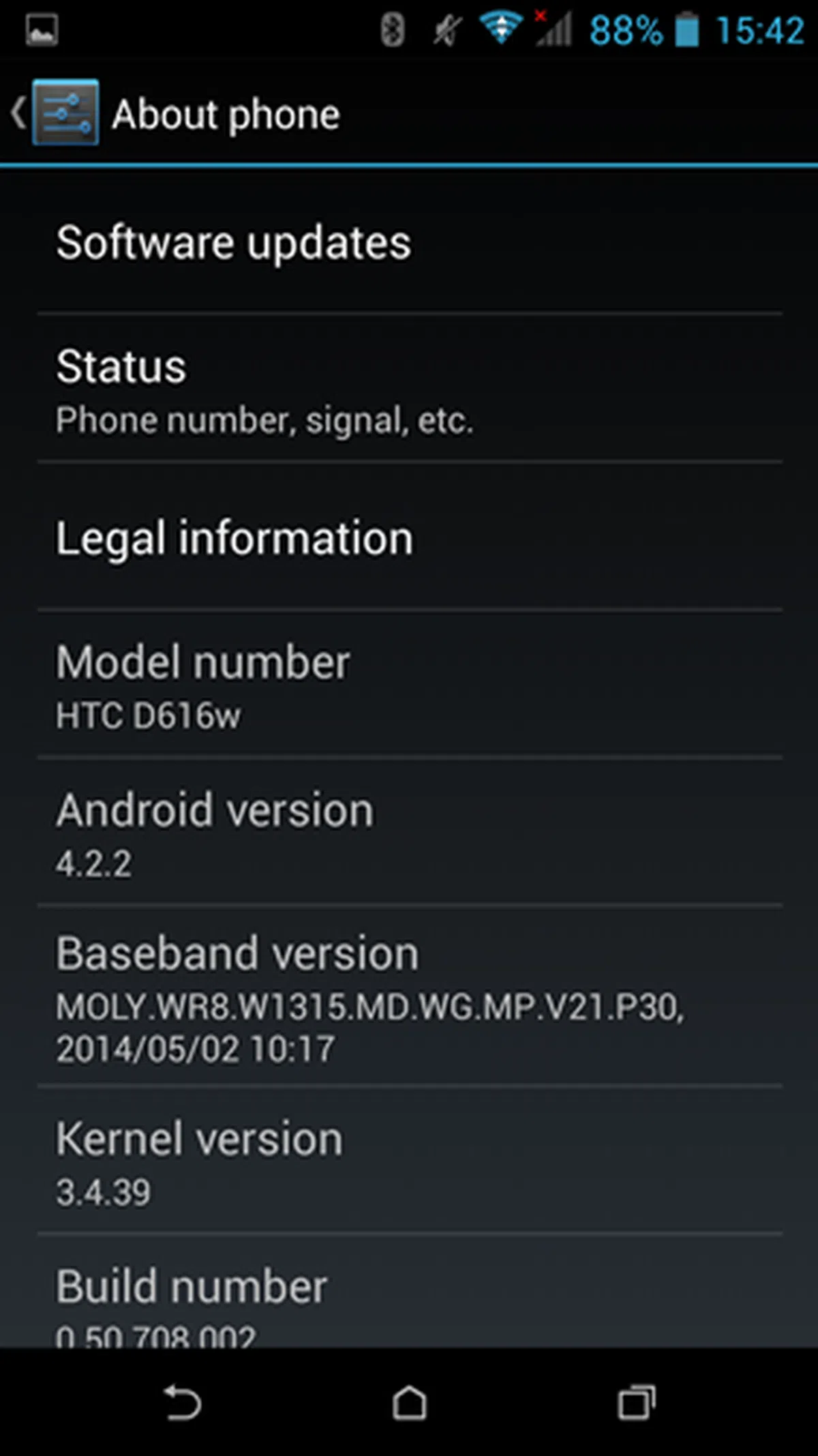 |
On paper, the Desire 616 seems to pack a lot of processing power with its MediaTek MT6592 octa-core 1.4GHz processor. If this sounds familiar, the same chipset (albeit with a higher clock speed) can be found on the Redmi Note that Xiaomi is selling here and the Huawei Honor 3X. Supported by 1GB RAM, the user experience is less than satisfactory; we consistently encountered lags and pauses when navigating the interface. To be frank, the Desire 616 is simply not up to speed with its peers.
Xiaomi Redmi 1S

You can't tell the Xiaomi Redmi 1S apart from the original Redmi from just looking at them.
Much of the changes in the Redmi 1S are under the hood. On the outside, everything remains the same as the first Redmi. You get the same rectangular design and rounded corners with a matte gray cover. It doesn't feel as premium and comfortable as the ZenFone 5, but the Redmi 1S is at least one notch better than the Desire 616 where design and appearance is concerned.
With no change to the design, this means that you get the same set of problems we faced earlier when reviewing the first generation Redmi. There is no backlight for the navigation buttons below the 4.7-inch display. Since the Back button is located on the right, left-handed users may have to stretch their thumb across to reach it. Considering that the phone isn't that wide to begin with, this shouldn't be much of an issue.

Aside from the lack of backlighting for the buttons, left-handed users should take note that the Back button is on the right.
Despite being the only 4.7-inch phone in this comparison (the other two sport 5-inch screens), the Redmi 1S weighs the heaviest at 158g. Depending on how you see it, the Redmi 1S can come across either as giving a solid feel in your hand or being a little too dense for its size.
Removing the back cover is easy, which will give you access to the microSD and two regular-sized SIM card slots. Similar to the Desire 616, you need to remove the battery before swapping out the microSD or SIM cards. While both card slots accept SIM cards with data connectivity, only the left slot supports 3G mobile data while the right slot is rated for 2G data connectivity.

From left to right: microSD memory card slot and two regular-sized SIM card slots.
Internally, the first hardware difference between the first generation Redmi and the Redmi 1S is the internal storage space. The Redmi 1S comes with double the storage capacity at 8GB. Out of the box, it comes with 6.14GB of available storage. Actual usable storage space is about 4.45GB after updating the preloaded apps. If you need more storage space, the microSD memory card slot is upgraded to support up to 64GB memory cards (a bump up from the 32GB limit on the original Redmi).
As it has a 4.7-inch 720p display, the Redmi 1S edges out the 5-inch rivals in pixel density. While the differences are hardly noticeable in everyday usage, it makes for good boasting among consumers who are obsessed with numbers or who have sharp eyes to discern the disparity.
The Redmi 1S still runs on the MIUI V5 OS which is based on Android 4.2.2 Jelly Bean. While the Mi 3 recently received an update to Android 4.4 KitKat, there is no word on a suitable update for the Redmi 1S.
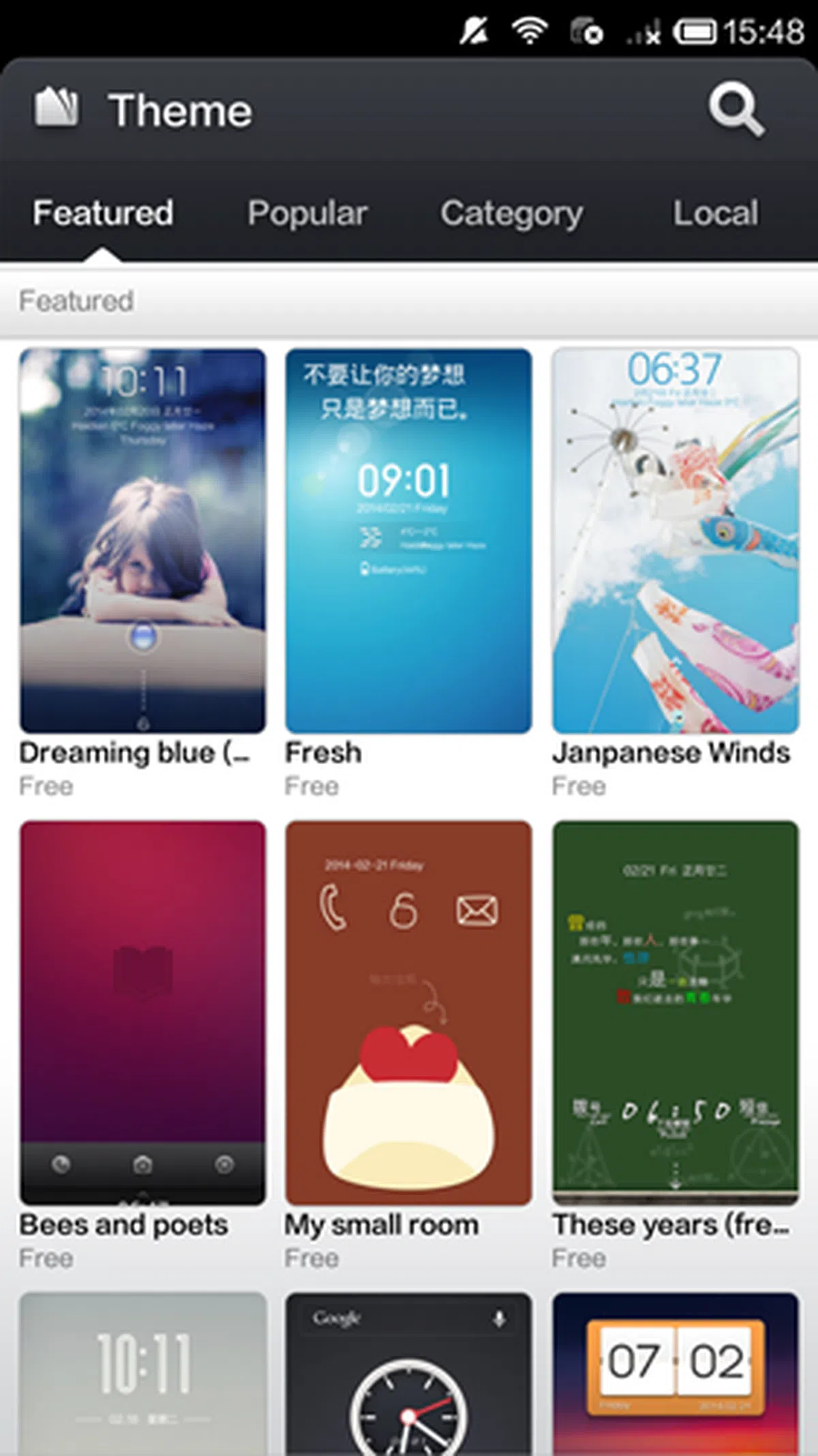 | 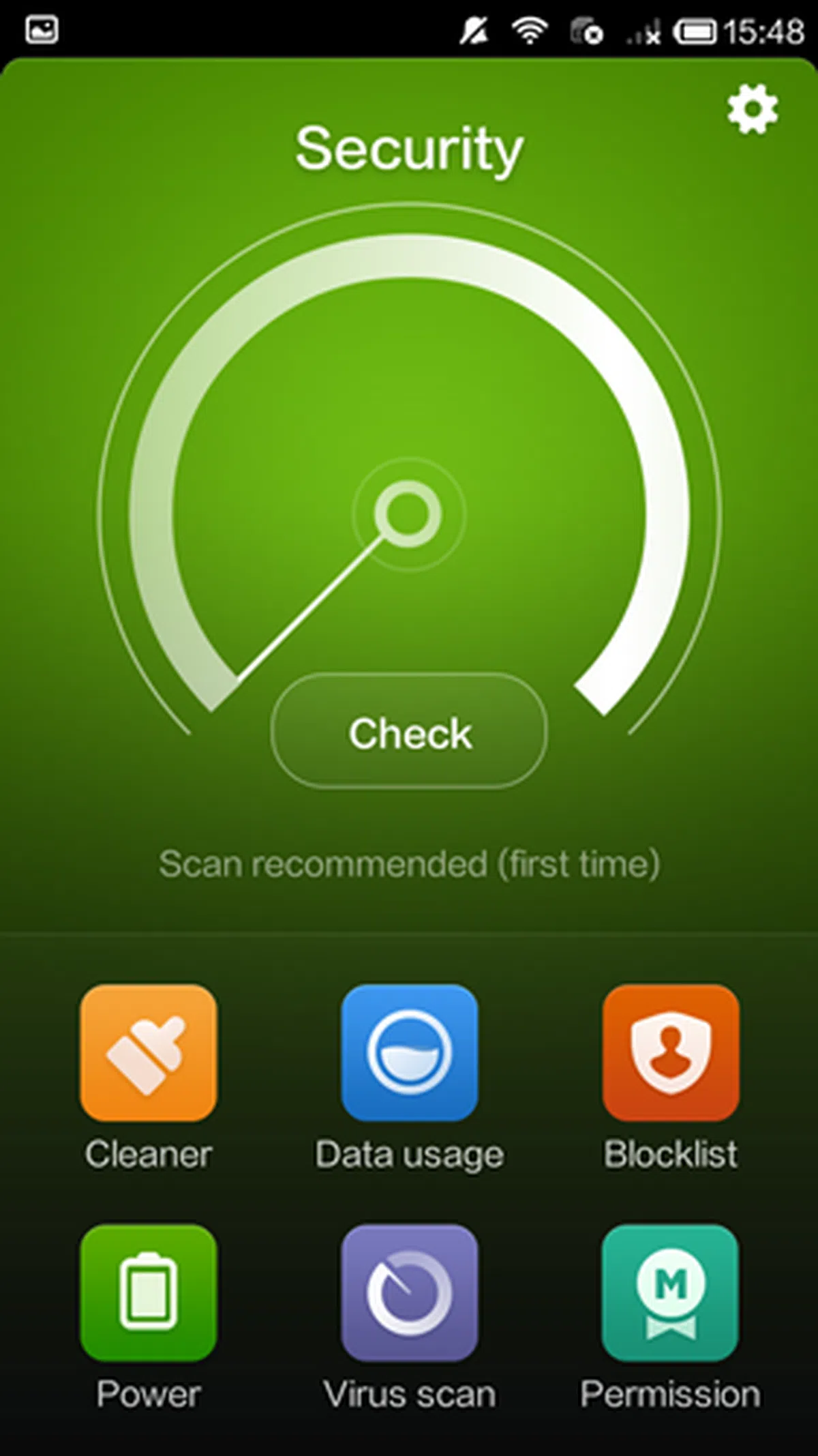 |
What probably sets the Redmi 1S apart from the other two phones is the endless customization options you have through MIUI V5. You have thousands of themes to choose from and a huge range of tools to control how your phone functions. For a deeper understanding of what MIUI is and its features, do check out the articles below:
- Understanding MIUI
- The Complete Guide to Xiaomi's MIUI V5
- Top Five Features of MIUI V5 OS
- Seven Hidden Tricks You Didn't Know About Xiaomi's MIUI V5 OS
The other notable hardware difference is the type of processor used: the Redmi 1S runs on a Qualcomm Snapdragon 400 quad-core 1.6GHz processor. The amount of RAM remains similar at 1GB. In terms of user experience, the Snapdragon 400 seems to make the phone operate smoother although we still encountered occasional lags when using graphics intensive themes. Apart from that (which you can't really nitpick at its price point), it is generally more responsive than the original Redmi. In our opinion, of the three phones, the Redmi 1S is the most responsive.
Photo Gallery of the Three Phones

The front-facing shot of the three phones. <br> Left to right: ASUS ZenFone 5, HTC Desire 616 and Xiaomi Redmi 1S.

The rear shot of the three phones. <br> Left to right: ASUS ZenFone 5, HTC Desire 616 and Xiaomi Redmi 1S.

A look at the microSD and dual-SIM card slots on the three phones. <br> Left to right: ASUS ZenFone 5, HTC Desire 616 and Xiaomi Redmi 1S.

The top view of the three phones. <br> Top to bottom: Xiaomi Redmi 1S, HTC Desire 616 and ASUS ZenFone 5.

The left side profiles of the three phones. <br> Top to bottom: Xiaomi Redmi 1S, HTC Desire 616 and ASUS ZenFone 5.

The right side profiles of the three phones. <br> Top to bottom: Xiaomi Redmi 1S, HTC Desire 616 and ASUS ZenFone 5.

The bottom view of the three phones. <br> Top to bottom: Xiaomi Redmi 1S, HTC Desire 616 and ASUS ZenFone 5.
Benchmarks Performance
In this section, we will use the three standard benchmarks - Quadrant, 3DMark 2013, and SunSpider - to compare the performance of the phones. Following that, we proceeded with our usual battery life testing. For ease of reference, we've repeated the specs comparison table once more, but this time we've included versions of the devices that were tested previously:-
Quadrant Results
Quadrant evaluates a device's CPU, memory, I/O and 3D graphics performances.

Due to its 8-core processor, the Desire 616 was able to maintain a healthy lead over the other two phones. It performed 56% and 35% better than the ZenFone 5 and Redmi 1S respectively. As a side note, the Desire 616 is on a par with the Huawei Honor 3X (with a score of 14,165), but just falls behind the Redmi Note (17,541).
Three things to note here: Firstly, it is interesting to see the disparity in benchmark performance between the Redmi 1S and Redmi; the Snapdragon 400 processor's performance in the Quadrant benchmark is almost double that of its MediaTek counterpart. This probably explains the better general user experience over its predecessor. Also, while the Desire 616 outperformed the Redmi 1S in this test, during actual use, you'd have thought that the Redmi 1S is the faster device because you don't encounter as much micro-lags. Lastly, the retail ZenFone with 2GB RAM manages to inch past its 1GB self that was originally reviewed and this holds true in most of the tests.
3DMark (2013)
Originally developed as a PC benchmarking tool, 3DMark is now expanded to support multiple platforms including Android OS. The Ice Storm benchmark is designed for smartphones, mobile devices and ARM architecture computers.
For an in-depth understanding of 3DMark for Android, do head over to our article, "3DMark - Android Device GPU Performance Review." In a nutshell, 3DMark consists of three test sections:
3DMark Ice Storm is an OpenGL ES 2.0 benchmark test that uses fixed off-screen rendering at 720p then scales the output to fit the native display resolution of your device. Ice Storm includes two graphics tests designed to stress the GPU performance of your device and a physics test to stress its CPU performance.
3DMark Ice Storm Extreme raises the off-screen rendering resolution to 1080p and uses higher quality textures and post-processing effects to create a more demanding load for the latest smartphones and tablets.
3DMark Ice Storm Unlimited is used to make chip-to-chip comparisons of different chipsets, CPUs and GPUs, without vertical sync, display resolution scaling and other operating system factors affecting the result.

Overall, ASUS and HTC had more consistent performance across the three 3DMark test sections. The ZenFone 5 scored wins in the Ice Storm and Ice Storm Unlimited, while the Desire 616 clinched the top position for Ice Storm Extreme and fared pretty close to the ZenFone 5 in the two other test sections. Given the dual-core processor driven by Intel, the performance on 3DMark is considerable and it shows Intel's capability to compete in smartphone arena.
While the scores suggest that none of the phones are high-end smartphone gaming devices, we found actual gaming performance for all three phones to be smooth, and they all offered very decent frame rates as noticed during the test.
SunSpider JavaScript
SunSpider JavaScript helps measure the browsing performance of a device when processing JavaScript. It not only takes into consideration the underlying hardware performance, but also assesses how optimized a particular platform is at delivering a high-speed web browsing experience.

The Intel Atom processor showed its strength in the SunSpider Javascript benchmark when the ZenFone 5 scored an overwhelming victory over the competition. In a twist of events, the original Redmi fared much better than the Redmi 1S. To give you a better idea where these three phones stand, the high-end phone like the LG G3, HTC One (M8) and Sone Xperia Z2 came in at under 1000ms.
Imaging Performance
One of the key selling features of the ZenFone series (including the ZenFone 5) is ASUS' PixelMaster camera technology. We've done a dedicated article on the PixelMaster camera technology, so remember to check that out. The ZenFone 5 comes with an 8-megapixel rear camera sensor with an aperture of f/2.0 and a five-element lens.

Image quality is above average; while there is a good amount of details captured, we noticed some image artifacts in the darker areas.
The Desire 616 is equipped with an 8-megapixel rear autofocus camera with an aperture of f/2.4.

The image quality is not on-par with the competition; the sides of the photo seem soft and noise levels are significant.
The Redmi 1S sports an 8-megapixel rear autofocus camera with an aperture of f/2.2 and 28mm wide angle lens.

The image quality is the best we've seen from the three phones. Colors are punchy with low levels of noise.

Photos taken in Auto mode. <br> Left to right: ASUS ZenFone 5, HTC Desire 616 and Xiaomi Redmi 1S.
In terms of overall image quality, the Redmi 1S seems to edge out the ZenFone 5 by an inch. The Redmi 1S has slightly more saturated and true-to-life colors that would appeal to most users. However, when pixel peeping to check on the details, the Redmi 1S has a slightly more aggressive noise reduction algorithm as it doesn't capture as much detail as the ZenFone 5. Generally, both managed capture photos with good amount of details, but the ZenFone 5 managed to retain slightly more detail, but more color noise as well. If you're looking to resize these photos for use and sharing, the Redmi 1S might have slight edge overall.
The Desire 616 lost out in sharpness (as evident in the readability of the Chinese words at the top) and the high level of image artifacts. Overall, image captured looked grainy, soft at the sides and had a cooler tone than expected.
Low Light Performance
As broad daylight photography improves with better camera modules, low-light imaging performance is the next important measure of camera phone photography performance these days. Of the three brands, ASUS specifically developed an imaging technology for the ZenFone 5 and 6 to stand out from the competition in this aspect. A unique shooting mode, the Low Light mode, is included in its suite of PixelMaster camera technology. For more information on the Low Light mode, do check out our article here and for a detailed dissection of its performance, you can check here.

Low-light mode. <br> ASUS ZenFone 5, f/2.0 at 2.69mm, 1/24 sec, ISO 340.

Night mode. <br> HTC Desire 616, f/2.4 at 3.5mm, 1/5 sec, ISO 467.

Night mode. <br> Xiaomi Redmi 1S, f/2.2 at 3.85mm, 1/13 sec, ISO 1600.

Close-up of the photos taken in their respective Low Light or Night modes. <br> Left to right: ASUS ZenFone 5, HTC Desire 616 and Xiaomi Redmi 1S.
Given our previous experience of the ASUS ZenFone 5, it's not a surprise that it triumphs the competition in low light photography. In fact, in our previous comparison, the outcome was no different as it went against industry heavyweights like the Samsung Galaxy S5 and Sony Xperia Z2. However, one thing to bear in mind is how the ZenFone 5's low light mode works, which is by combining four adjacent pixels into one, thereby boosting light sensitivity and contrast to ensure photos produced are usable. Because it uses adjacent pixels to its advantage, the photo's image resolution is reduced to just 2 megapixels, but the important point is that you get a usable photo for immediate sharing and enjoyment which would otherwise have been deleted because it was too dark for any use. Advanced users might dabble in suitable post processing techniques to perhaps rival the same outcome from a standard resolution photo, but let's face it, the target market for these phones either don't have the time or the skill to do that.
Battery Performance
Our standard battery test for mobile phones includes the following parameters:
• Looping a 800 x 480-pixel video with screen brightness and volume at 100%
• Wi-Fi and Bluetooth connectivity turned on
• Constant data streaming through email and Twitter


The ZenFone 5 and Redmi 1S are comparable in terms of battery mileage; the difference is merely 8 minutes. It's odd that the Desire 616 fell behind the pack by a significant margin; it lasted nearly an hour less than the ZenFone 5 even though both phones have 5-inch 720p displays, and that's despite it having a slightly higher battery capacity.
Looking at the Power Consumption chart, the Desire 616 has the highest power consumption among the three. It is even more puzzling considering that we stumbled upon a software bug on the Desire 616, which automatically enabled the CPU power saving mode whenever we disabled it to play the video file. We've checked with HTC Singapore on this issue and the company has acknowledged it as a software bug. It is currently working on a software patch.
Portability
We measure the portability of a device by calculating its battery life to (weight x volume) ratio. As the ZenFone 5 is the lightest and boasts the longest battery mileage of the lot, the ASUS phone easily claimed the top spot in our Portability Index.
This distinction however clearly remains in the ultra budget category of non-4G, dual-SIM devices. Most, if not all the sub S$400 4G phones either have longer battery life and better physical traits that give them a far higher portability index, but this is just for your information that the ultra budget phones compared in this article aren't spectacular but sufficient for their class. So if you need a phone with strong battery life and doesn't cost a whole lot more, you know you've several other options.

Conclusion
The arena of budget smartphones is literally exploding with several options for all kinds of needs and tastes. Once considered to be suitable only for those with limited needs or a strict budget, the capabilities of these devices have increased tremendously while still maintaining affordable price points. The process of commoditization has certainly helped to reduce component prices as the smartphone becomes the most adopted tech product of any other device. At the same time, new marketing techniques like that from Xiaomi are also further helping to ensure price points of decently adequate phones remain affordable. Despite these movements, tech vendors are busy trying to maintain differentiating factors or features to trump their competitors and that's what makes evaluating these gadgets interesting to us/
Having focused on a massive roundup of budget 4G phones, budget phablets (on HWM), we then turned to focusing on even more affordable devices with dual SIM capabilities as established in this comparison. So after handling and testing the ASUS ZenFone 5 (retail edition), HTC Desire 616 and the Xiaomi Redmi 1S for some time, here's how they stack up after we've grilled them across various aspects:-
ASUS ZenFone 5 | HTC Desire 616 | Xiaomi Redmi 1S | |
Design | 8.0 | 7.0 | 7.5 |
Features | 8.5 | 7.5 | 8.5 |
User-Friendliness | 8.0 | 7.5 | 8.0 |
Performance | 8.0 | 6.5 | 8.0 |
Value | 8.0 | 6.0 | 9.0 |
Price | S$249 | S$298 | S$169 |
Overall | 8.0 | 6.5 | 8.0 |
Here's a summary of each smartphone for this comparison and their final standings:
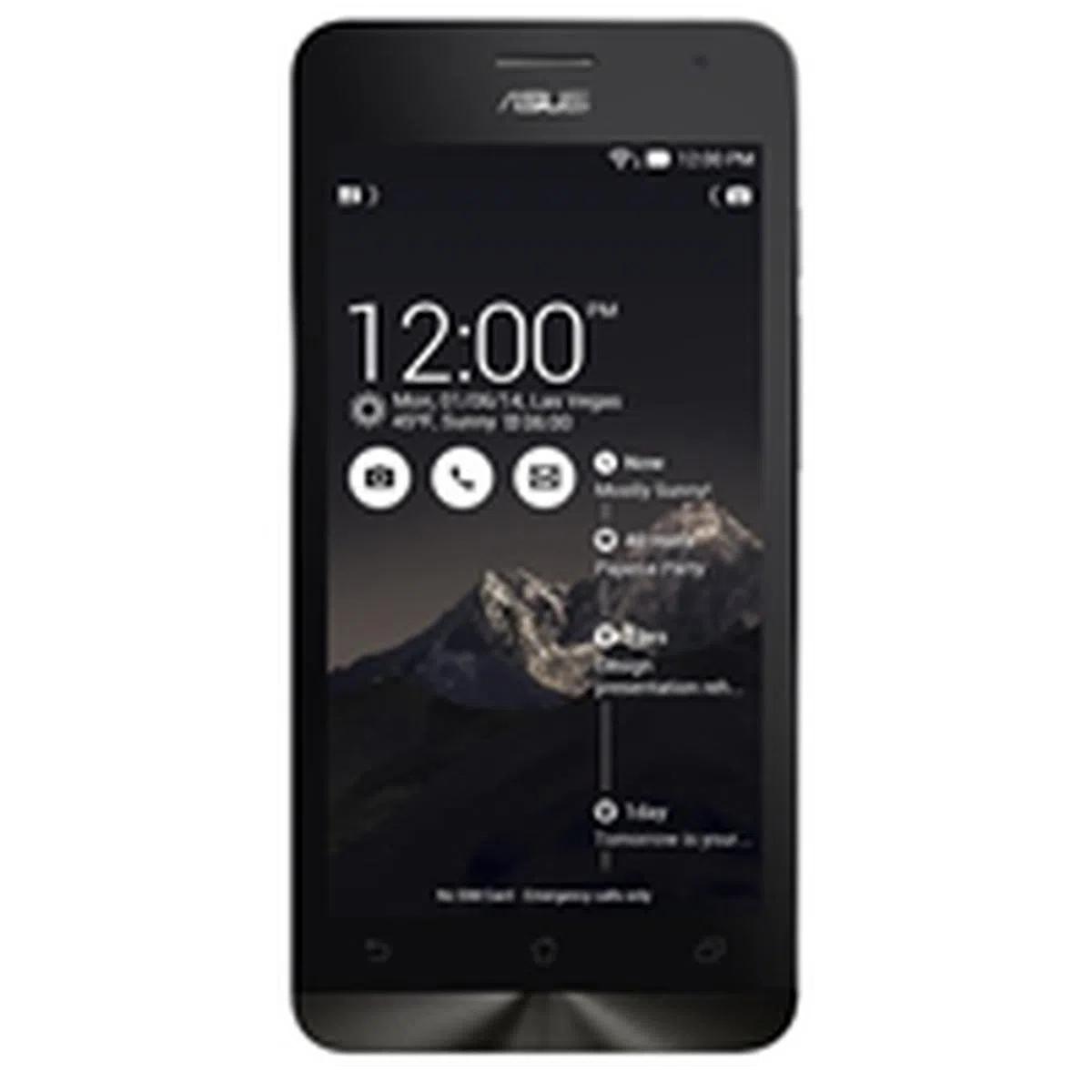 | For the ZenFone 5, we really like its soft touch, matte texture on the rear, as it delivers excellent handling. The build quality is great for the price consumers are paying. One other hardware aspect that the phone is different from the competitors is 3G data connectivity support on both micro-SIM slots. On the software side, ASUS offers a simpler, modernized interface that will appeal to the mainstream consumers. It boasts some useful features such as What's Next and Do It Later to help you stay up-to-date on your schedule and tasks. That said, lags are still noticeable, and that's despite it having 2GB RAM. Hopefully with time, the ZenUI can be better optimized to overcome this. It is however better than the initially tested 1GB RAM edition. When it comes to benchmark performance and actual usage, the ZenFone 5 consistently met, or exceeded some of our expectations, especially in the imaging department. While it is not the most affordable of the lot, the S$249 ZenFone 5 provides plenty of bang for your buck. Its main drawbacks are the non-removable battery and the occasional micro-lags that we've observed. | |
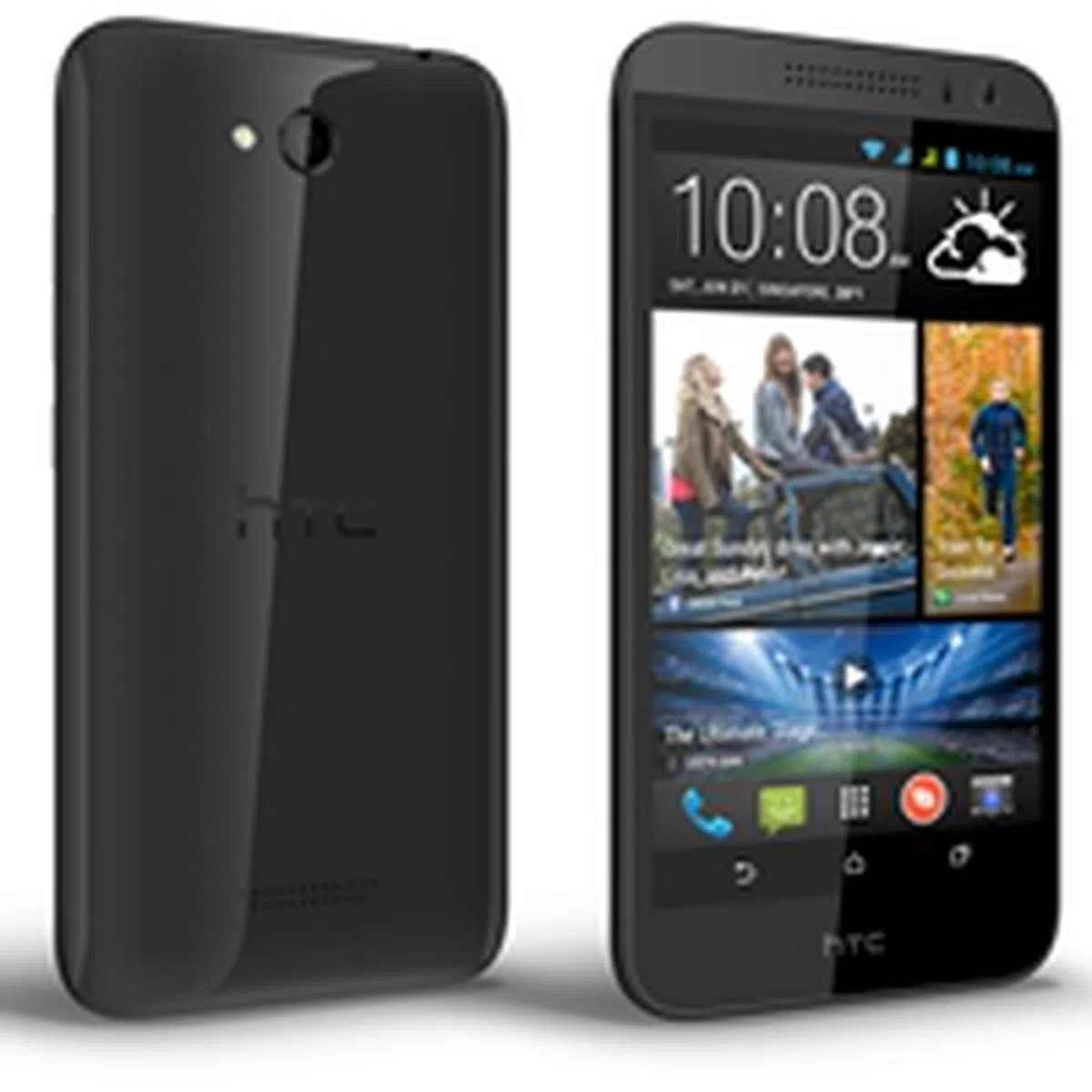 | To be honest, the HTC Desire 616 did not meet our expectations. Considering that it has delivered quite a few capable smartphones this year (even in the mid-range and entry level segment), we felt that the Desire 616 is a disappointment. Compared to the competition, the glossy rear of the Desire 616 is a letdown since it makes the phone look unsightly with fingerprints and smudges. In other areas, it wasn't delivering as well as its more affordable competitors, such as in general responsiveness, imaging quality and battery life. By using a customized version of Sense UI to accommodate the phone's hardware, some features on the latest version of the UI wasn't available on this phone, but more importantly, we expected a better usage experience fit for the device, which unfortunately it didn't deliver. In essence, there's nothing outstanding about this device. Overall, there is little reason to recommend the S$298 Desire 616 to any consumer when there are better alternatives. Sure, the octa-core processor performed decently in synthetic benchmarks, but it can't address the issues we've highlighted above. | |
 | Although it is positioned as a slightly upgraded variant of the original Redmi,the Xiaomi Redmi 1S brings nothing really new to the table. You get the same design, handling, user interface, battery and imaging performance. What will appeal to consumers are its price tag and MIUI V5. The latter offers plenty of customization options for consumers who like to control how their phones look and function. For the same price of S$169 as its predecessor, you get more internal storage and a more capable processor. In our usage, the Redmi 1S is definitely a notch more responsive than the original Redmi. Therefore, it is a no-brainer for anyone who wants to get the most affordable Android smartphone without sacrificing too much on other attributes. Yes, it's a tie with the ZenFone 5 where the overall rating is concerned. Your job now is to decide whose flaws you're willing to overlook. Editor's note: In case you're deciding between the original Redmi (say, you found someone selling it) and the Redmi 1S, we'd say go for the Redmi 1S. Compared to its predecessor, the improvement in UI responsiveness is obvious, and we credit that to the Snapdragon 400 processor. The original Redmi is a no-brainer if you're looking for a dual-SIMphone at the beginning of the year, but as we've pointed out at the start of this roundup, times have changed and even the upgraded Redmi 1S is facing strong competition today. |
Our articles may contain affiliate links. If you buy through these links, we may earn a small commission.

